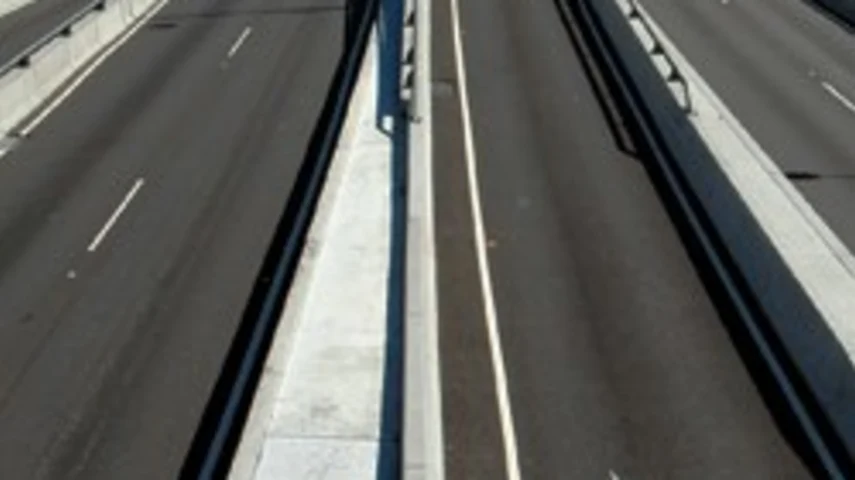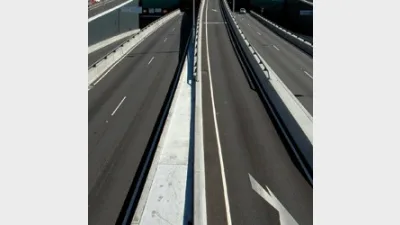How to spot a good infrastructure investment opportunity



Infrastructure assets are now attractively priced and offer the potential for good yields at moderate risk, but the devil is in the detail. AMP Capital's Greg Maclean explores how Australian investors can identify the right infrastructure opportunities.
Before the global financial crisis (GFC), infrastructure stocks soared to record levels, only to be brought to earth with a jolt as the crisis struck.
Infrastructure cash flows do not tend to be volatile, and as a consequence these assets can support high levels of gearing – leveraging up returns for investors.
But too much debt can also increase risk. The major trigger for the collapse of infrastructure stocks was the rapid deterioration of debt markets, with banks unwilling to lend to fellow banks.
At the peak of the GFC, the spread on typical BBB-rated debt in Australia exceeded 500 points, compared with spreads of less than 100 before the crisis (see figure 2).
As a consequence, highly leveraged groups suffered disproportionately, with many listed infrastructure groups forced into capital raisings or asset sales to reduce gearing levels.
Fortunately, conditions appear to have stabilised with current BBB spreads at 250 points and trending down. However, compared with pre-GFC levels, debt servicing costs for infrastructure groups are substantially higher.
Events were less traumatic in the unlisted space, where independent valuations are developed on the basis of the underlying strength of cash flows.
As a result valuations of high-quality assets have held up quite well – although they have still been adversely affected by the debt servicing costs. As financial conditions improve, we anticipate some upside.
Growing opportunity for infrastructure investment
While Australia seems well positioned to recover from the recession, there are still areas of concern. The growth in Chinese industrial output appears to be slowing, and the renewed uncertainty concerning sovereign debt in many European countries hints at a possible new liquidity squeeze in debt markets.
In the face of such uncertainty, investors may rebalance portfolios towards more defensive assets. Infrastructure has traditionally been considered defensive and currently looks relatively cheap.
Most infrastructure groups have significantly stronger balance sheets than before the GFC. This suggests that infrastructure is an option well worthy of consideration. But how do you sort the wheat from the chaff?
Cash is king
One of the major characteristics of infrastructure is the relative security of its underlying cash flows. In determining cash flow security, revenue structures are far more important than the physical nature of the assets.
For example, imagine two physically identical electricity generation facilities.
They have the same operating costs, and they service the same electricity grid. One facility has a long-term contract, including an agreed pricing path, with an investment grade customer.
The other sells its entire output on the spot market. While both look similar, only the first offers long-term secure cash flows.
We are looking for assets that have some of the following characteristics:
- Have near-monopolistic market positions, with little revenue risk (eg, water, gas or electricity distribution);
- Are regulated, or unregulated assets with natural market power (toll roads, ports and rail, power generation assets supported by long-term power purchase agreements); and
- Provide essential social services (eg, schools, hospitals and prisons with government revenue streams).
Overall, they will be asset rich with revenues showing a low elasticity to economic conditions.
Consequently, operating costs are relatively small giving the high EBITDA (earnings before interest, taxes, depreciation and amortisation) margins that sustain high gearing levels.
Let’s see how a real infrastructure group stacks up. United Energy (UE), Multinet (Multi) and WA Gas Networks (WAGN) are low-growth regulated monopolies.
The Dampier to Bunbury Pipeline (DBNP) has long-term capacity agreements and has more of a growth focus.
They are part of the DUET group portfolio.
Proportional cash flows, as measured by EBITDA for UE, Multi and WAGN are very consistent. DBNP shows strong growth. EBITDA margins are well above 60 per cent, confirming the assets’ ability to support significant debt.
How much gearing is too much?
Given over-gearing was a major problem for some infrastructure groups during the GFC, how do we ensure a group’s balance sheet is sufficiently robust to withstand future shocks?
There are different types of debt carried by a typical infrastructure group (in all cases, interest rates should be effectively hedged):
- Debt at the asset level secured against operating cash flows, where the infrastructure group has a majority shareholding;
- Debt at the asset level secured against operating cash flows, where the infrastructure group has a minority shareholding; and
- Debt at the holding company (HC) level.
The first type provides the greatest security of cash flows through to the HC, as the HC can dictate the operating entity payout policy. Statutory accounting policy requires this debt to be held on the HC balance sheet.
In the second case, payout policies are not controlled by the HC. In some cases specific shareholder agreements may protect the rights of minorities.
Debt at the HC level is usually associated with the funding of growth opportunities and often comprises of high-yielding subordinated notes.
Security is inherently volatile and dividend payments may be negatively affected to reserve cover ratios.
Clearly, it is highly desirable to have minimal HC debt, especially if underlying cash flows are relatively volatile.
In our view, cash flows in the operating entity should give a minimum two-fold cover of interest payments. DUET’s debt position is summarised in Figure 4.
The only flag raised is the DBNP interest cover is marginally down on our target of two times.
It’s important to determine if this is a ‘one off’ or something more systemic. In this case, the low cover ratio appears to be a ‘one off’ artefact of the growth program.
HC debt is significant at about 12 per cent of total debt but it is supported by strong cash flows from the operating entities.
Assets such as ports and toll roads are normally more exposed to economic and market conditions than these DUET assets, which will result in more revenue volatility.
However, provided financial structures are robust enough during downturns in the economic cycle, they can still be good investments.
Typically we would expect to see lower gearing than the DUET assets shown above. A minimum two-fold cover of interest payments is still a good yardstick, but we will need more data to confirm if this can be consistently achieved.
Potential investors should carry out a similar analysis of historical results. Ideally these should include results covering periods of economic lows.
Returns to aim for
After analysing for cash flows and debt position, investment choice can then be made on the basis of returns. It’s important to consider guidance on future dividends rather than past performance.
The investor should decide what balance between yield and growth meets their requirements.
Some may favour yield over growth, especially where that growth is dependent on favourable economic conditions.
However, strong growth potential could add some sparkle to an investment portfolio. Also keep in mind how long an investor is prepared to hold the stocks.
Opportunities for retail investors in unlisted infrastructure
We have focused on listed infrastructure stocks because they are readily accessible to the retail investor.
Unlisted or direct infrastructure is favoured by long-term institutional investors that can commit to a significant capital investment and do not require short-term liquidity.
New products targeted at the long-term risk adverse investor and are now available.
They invest in both listed securities and direct infrastructure assets to combine the advantages of direct infrastructure with the diversification and liquidity of listed securities.
Greg Maclean is head of research - infrastructure at AMP Capital.
Recommended for you
When entering paid employment, it’s not long before we are told that we’ll need to lodge a tax return but there are times when a person will be excepted.
Anna Mirzoyan examines how grandfathering affects income support payments and how factors such as paying for aged care can impact them.
There are specific requirements that only apply to trustees of self-managed superannuation funds, writes Tim Howard, including the allocation in their investment strategy.
Investments bonds offer a number of flexible, tax-advantaged benefits, writes Emma Sakellaris, but these are often overlooked as old fashioned when it comes to portfolio allocations.










